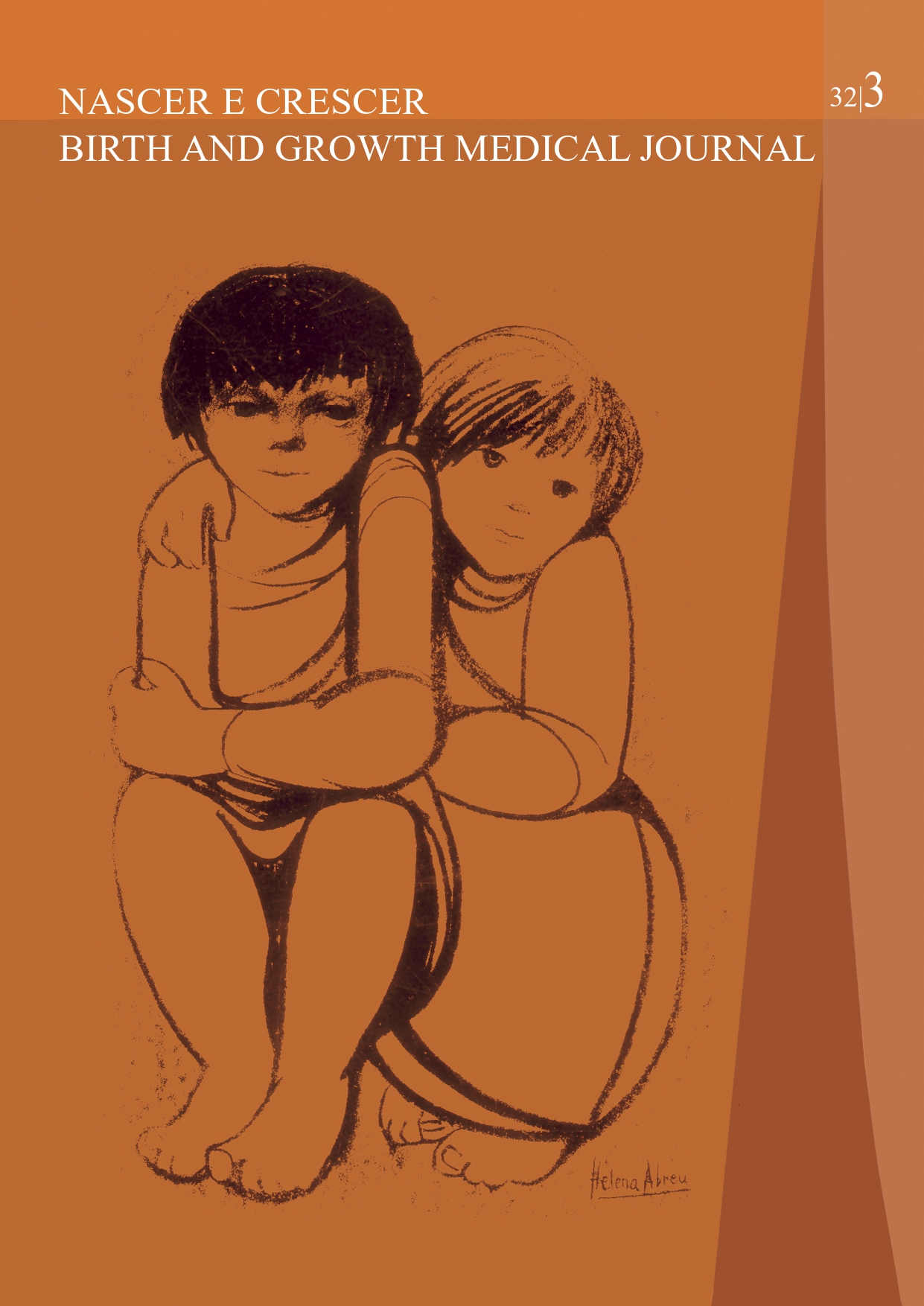Delayed subaponeurotic fluid collection: An unusual cause of scalp swelling
DOI:
https://doi.org/10.25753/BirthGrowthMJ.v32.i3.25731Keywords:
infant, scalp swelling, subaponeurotic fluid collection, subgalealAbstract
Delayed subaponeurotic fluid collection (DSFC) is a rare cause of scalp swelling in young infants whose exact etiology remains unknown. It is often associated with traumatic or instrumental delivery or fetal electrode monitoring. The diagnosis is clinical, with DSFC being differentiated from other causes of scalp swelling based on the characteristic history and physical examination findings. However, laboratory tests or head imaging study may be considered in the differential diagnosis.
Herein is presented the clinical case of a seven-week-old male infant brought to the pediatric Emergency Department with acute onset of large and fluctuant scalp swelling. He had been born by cesarean section after induction of labor and failure to progress. The diagnosis of DSFC was established after imaging studies.
DSFC is a very rare diagnosis, with only about 50 cases reported in the literature. Despite its acute onset, it is a benign condition that does not require additional laboratory or imaging studies. Current treatment is conservative and the condition usually resolves spontaneously.
Downloads
References
Hopkins R, Inward C, Chambers T, Grier D. Subaponeurotic fluid collections in infancy. Clin Radiol 2002;57(2):114–6.
Hussain J, Chow A. Spontaneous Subaponeurotic Fluid Collection. Consultant 2020; 60(11):26-7.
Ilarslan N, Gunay F, Kaynak S, Ucan B, Fitoz O, Ince E. A rare cause of scalp swelling in infancy: Delayed subaponeurotic fluid collections in five cases. Childs Nerv. Syst. 2019; 35:875–8.
Lee J, Wenger T. Delayed Subaponeurotic Fluid Collections of Infancy. J Pediatr 2018;197:310.
Medows M, Nijres B. Delayed subaponeurotic (subgaleal) fluid collection. BMJ Case Rep 2014; bcr2013203457.
Munjal S, Kumar S. Subaponeurotic Cerebrospinal Fluid Collections in an Infant. J Pediatr Neurosci 2017;12(3):271-3.
Petraglia A, Moravan M, Marky A, Silberstein H. Delayed sub-aponeurotic fluid collections in infancy: three cases and a review of the literature. Surg Neurol Int 2010;1:34.
Roy H, Magdum S. Sub-aponeurotic fluid collection in a neonate associated with fetal scalp electrode monitoring: brief communication. Eur J Obstet Gynecol Reprod Biol 2014; 181:343-344.
Schoberer A, Yagmur E, Boltshauser E, Korinth M, Niggemann P, Häusler M. Sub-aponeurotic fluid collections: a delayed-onset self-limiting cerebrospinal fluid fistula in young infants. Eur J Paediatr Neurol 2008;12(5):401–3.
Smith A, Kandamany N, Okafor I, Robinson I, Foran A, McNamara R. Delayed infant subaponeurotic (subgaleal) fluid collections: a case series of 11 infants. J Emerg Med 2016; 50(6):881–6.
Smith B. Delayed subaponeurotic fluid collection of infancy. J Paediatr Child Health. 2021 Sep;57(9):1508-1509. doi: https://doi.org/ 10.1111/jpc.15245.
Stephan A, Feldman K, Otjen K, Metz J. Delayed Subaponeurotic Fluid Collections: A Bening Cause of Scalp Swelling in Infancy. Pediatri Emer Care 2019;00:00-00.
Vaibhav A, Smith R, Millman G, Cooper J, Dwyer J. Subaponeurotic or subgaleal fluid collections in infancy: an unusual but distinct cause of scalp swelling in infancy. BMJ Case Rep 2010; bcr0420102915.
Wang S, Drake J, Kulkarni A. Management and outcome of spontaneous subaponeurotic fluid collections in infants: The Hospital for Sick Children experience and review of the literature. J Neurosurg Pediatr 2016;18(4):442–7.
Downloads
Published
How to Cite
Issue
Section
License
Copyright (c) 2023 Catarina Cristina, Mariana Duarte, Mário Matos, Rita Machado

This work is licensed under a Creative Commons Attribution-NonCommercial 4.0 International License.
Copyright and Authors' Rights
All articles published in Nascer e Crescer - Birth and Growth Medical Journal are Open Access and comply with the requirements of funding agencies or academic institutions. For use by third parties, Nascer e Crescer - Birth and Growth Medical Journal adheres to the terms of the Creative Commons License "Attribution - Non-Commercial Use (CC-BY-NC)".
It is the author's responsibility to obtain permission to reproduce figures, tables, etc. from other publications.
Authors must submit a Conflict of Interest statement and an Authorship Form with the submission of the article. An e-mail will be sent to the corresponding author confirming receipt of the manuscript.
Authors are permitted to make their articles available in repositories at their home institutions, provided that they always indicate where the articles were published and adhere to the terms of the Creative Commons license.


